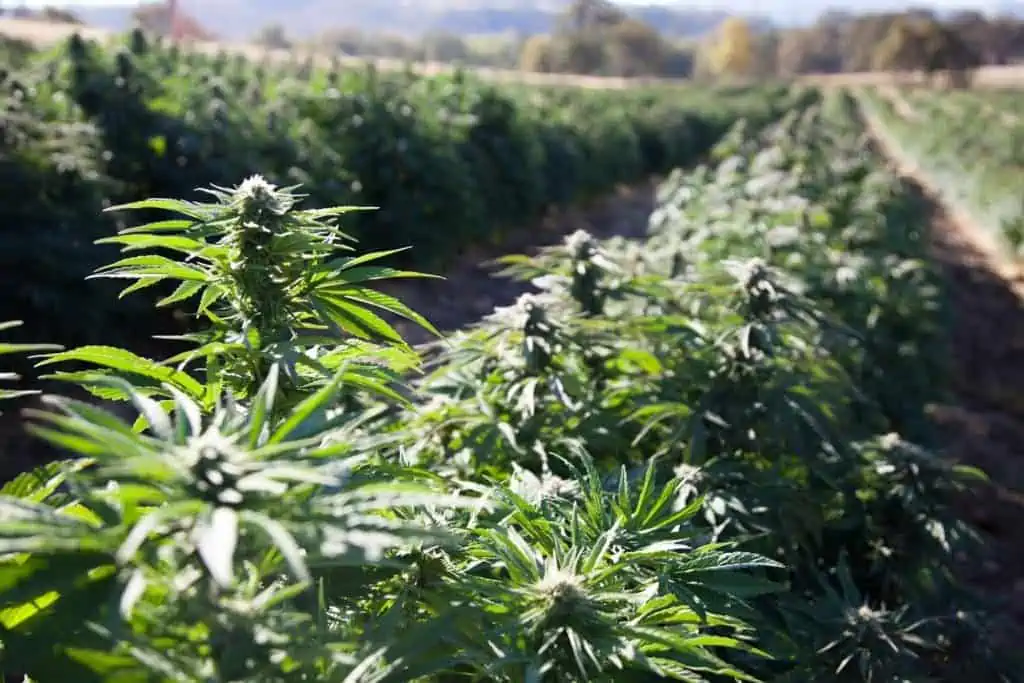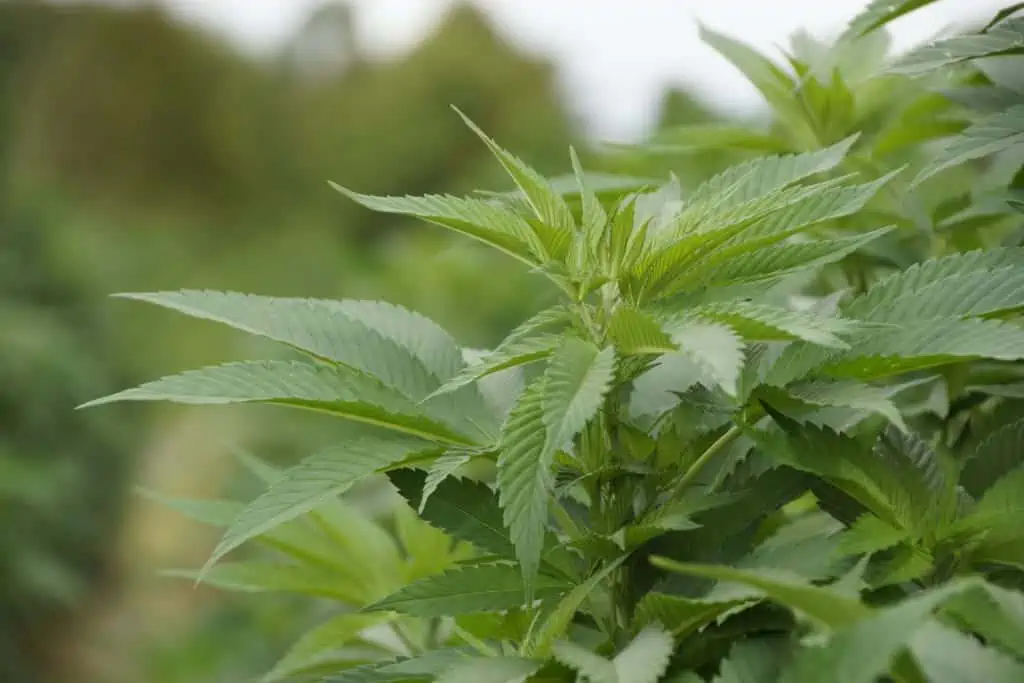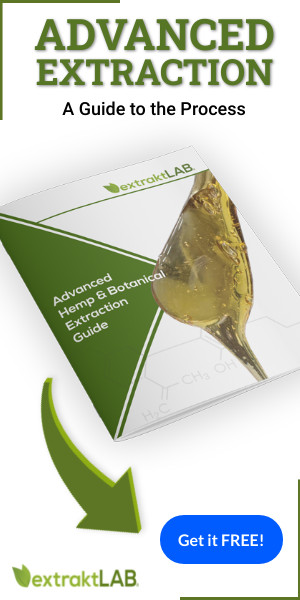History of Industrial Hemp & CBD
Industrial hemp has become widely grown and cultivated within recent years as a result of a change in legislation that has allowed hemp production commercially. This has opened the door for many businesses to capitalize on a plant that is capable of creating a wide variety of products and services that were otherwise unavailable previously. These industries range from clothing and textiles to food and medicinal alternatives.
What is Industrial Hemp?
Industrial hemp is in the plant species that has been used globally in an assortment of consumer and industrial products. In the USA, hemp production is regulated under rigid law enforcement legislation. To generate industrial hemp in the United States the grower must find a license from the Drug Enforcement Agency (DEA).

The primary reason for such tight control from the DEA is industrial hemp’s close cousin, marijuana. Unlike this particular species of plant, legal hemp does not contain enough levels of psychoactive cannabinoids to get a person high from ingesting or smoking it directly or products derived from it.For years, and up until this point, the psychoactive compound in this plant has been listed as a schedule one controlled substance, legally labeling it as highly addictive with no medical benefits despite the fact that several states in the U.S. have legalized this plant in both medicinal and recreational settings. Due to this fact, industrial hemp processing and production in a farm is highly regulated.
Despite tight regulations, this plant is capable of producing a variety of products in a number of industries making it a vastly popular asset in terms of production and distribution estimated to reach billions of dollars within the decade.
Calculate Your extraction Business Operating Cost
Starting a extraction Business? Check out our Calculators and to analyse costs, estimated revenue, yield, initial investments and important metrics for your extraction business.
The History of Industrial Hemp
8000 BCE
Originating in Central Asia, the use of hemp fibre can be traced back as early as 8000 BCE making it one of the earliest agricultural crops on record.
2000 BCE
Hemp begins to rapidly expand all over the eastern world. By this time, hemp has been documented as a material for clothing, rope, medicine, food and more.
800 BCE
Open worldwide trade of hemp products begins. Major trade routes like the Silk Road saw increased traffic by nomadic traders who would bring the hemp trade to European areas starting with Germany around 800 BCE.
200 BCE
The use of hemp for paper materials started in China. This would mark the beginning of hemp use for books and other important documents for centuries to come.
1500
Hemp was later planted in Chile around 1500 A.D. and would spread to North America roughly one century later. From this point, the use of industrial hemp can be recorded back to roughly 1606 for things like paper, rope, lamp fuel, etc.
1700s
In the late 1700s, laws in the United States required farmers to grow hemp in certain colonies. This illustrated just how widespread hemp was and how valuable it became for the founding of the United States.
1940s
This was the narrative surrounding hemp for the next two decades including a period of time between 1942-1945 that encouraged farmers to grow hemp as a war relief effort – even releasing a documentary called Hemp for Victory. At this time, nearly 400,000 acres of hemp were planted in the United States marking one of the largest hemp booms in the nation.
1950s
In 1957, some of the last hemp plantations were documented in Wisconsin before a radical shift in the cultural narrative surrounding the hemp plant. For the next several decades, the hemp plant would be demonized alongside the newly coined term “marijuana” severely hindering the progress made and the beneficial uses of the agricultural boom that hemp brought to the United States. We will explore this in more detail below.

The Many Industrial Hemp Uses
Industrial hemp has been used for generations in a vast array of industries and products. Because of its sturdiness, ease of growth, and diverse uses, industrial hemp is incredibly versatile and usable for seemingly limitless end products and applications:
Industrial Hemp Products
Building and Construction:
- Insulation: Using the fibrous material of the hemp plant, insulation comparable to standard insulation materials without concern of rotting and also has pest prevention attributes as well.
- Plastics:Cellulose based plastics derived from hemp have been created and utilized in a number of industries.
- Hempcrete: This newly popular product uses a simple mix of industrial hemp hurd, a binder and water to create a “concrete” very similar to standard concrete that has been used for many years and is even fire-resistant. Unlike typical concrete, however, hempcrete is very lightweight and durable.

Agriculture:
- Animal Feed: Just like hemp products can be used to create food items for human consumption, hemp contains plenty of protein, fiber and nutrition that can be used to feed livestock, fish and other animals.
- Animal Bedding: The fibrous materials of the hemp plant are incredibly absorbent making it ideal for animal bedding in a home or agricultural setting.
- Garden Mulch: Again pointing to its absorbency, hemp fiber is very useful for garden mulch as a sustainable, plant healthy option for gardens and other agricultural purposes.
Clothing and Textiles
- Ropes and Cordage: Hemp fibers are surprisingly durable and tough. Coupled with an ability to process into a string-like consistency, this makes hemp a great option for ropes and cords that are tough and reliable.
- Clothing: Hemp fiber is incredibly tough and surprisingly pliable making it a perfect option for clothing and textiles. When processed properly, hemp clothing can be soft as cotton, and reliable as well.
- Paper: Using the pulp from hemp stalks, paper akin to traditional tree-based paper can be made that could be a great alternative to prevent deforestation issues.
Health, Medicine and Beauty
- Medicines: Of course, cannabidiol (CBD) is swiftly gaining popularity due to its many potential health benefits, but there are a number of other components of hemp that are showing promising medicinal potentials as well. While most of these are other cannabinoids like cannabigerol (CBG), Delta-8 Tetrahydrocannabinol (Delta-8 THC) and others, studies have shown that terpenes may play a major role in medicinal benefits.
- Cosmetics and Skin Care: CBD and other cannabinoids are not only receptive to health benefits through ingestion but also can be absorbed transdermally. This makes products like balms, salves, lotions and other skin care and beauty products widely popular in the industrial hemp industry. Buyers use CBD skin products for eczema, acne, inflammation and other ailments.

Food
- Cooking Oil: Hemp seed oil is a very flavorful and effective cooking alternative to olive oil, canola, or vegetable oil.
- Food for Human Consumption: Pressed hemp oil is not the only popular way to consume hemp products. The hemp seeds themselves are a good source of fiber while “hemp hearts” (de-shelled hemp seeds) are flavorful and full of nutrients.
Fuel
- Biofuel: While this particular product is yet to see full market realization, biofuels derived from hemp have promising studies for the future. In an increasing effort to shy away from crude oils, gasoline and carbon heavy fuel options for green options, hemp biofuel may soon find its way into the automotive industry and others in the near future.
Ask our industrial hemp experts to determine what type of hemp processing and hemp extraction equipment is best suited for your business.
Industrial Hemp Production
Industrial hemp can grow to a height of roughly 15 feet , with long fibers. The stem is made up of the outside “bark” or bast, sought after for fabrics, textiles and other industrial products. The internal substance called hurd, can be used for different things like bedding mulch and other products. Another very valuable part of industrial plants is hemp seed which can be used for a variety of food products that are increasingly popular.
Industrial hemp is a very hardy plant, able to be grown and harvest in areas where most other crops will fail. It is capable of withstanding periods of drought, heat and frost and also be cultivated without pesticides or other chemicals in many instances – however, it can be subject to attack by insect pests. It doesn’t have huge water requirements or a great need for ongoing care. The plant grows quite quickly, achieving heights of four meters in four months.
Growing Hemp for CBD
Among the most popular uses of industrial hemp is its cultivation for cannabidiol – commonly known as CBD. This incredibly popular cannabinoid is a non-psychoactive compound that has been shown to have therapeutic properties. Some of those properties include anti-anxiety, anti-convulsive, pain remediation and many more. Due to its lack of psychoactive effects and promising medicinal benefits, CBD may be the most common reason for industrial hemp production to date.
Since its removal from the DEA’s list of controlled substances, CBD has been readily available as an option for a variety of ailments and has even been formulated into an FDA approved medication called Epidiolex. This medication has been approved to treat seizure disorders in adults and children who suffer from rare forms of epilepsy including Lennox-Gastaut syndrome and Dravet syndrome. This drug is testament to the efficacy of industrial hemp production for the purpose of CBD product formulation.

The History of CBD Extraction
1940 – 1942
In 1940, British chemist Robert S. Cahn was the first to identify the structure of an individual cannabinoid, cannabinol (CBN), paving the way for the isolation and research of the separate cannabinoids found in the hemp plant. It would be just two years later when American Chemist, Roger Adams, would be the first to discover CBD and ultimately lead to the discovery of the psychoactive cannabinoid, delta 9 THC. However, it would be years later that the chemical structure of CBD would be named.
1946
After CBD and other cannabinoids were isolated for the first time, research began in animal trials with well documented case study performed by Walter S. Loewe. This particular study tested the three most common cannabinoids, CBD, CBN and delta-9-THC on rabbits and mice. This was the first recorded result of the psychoactive effects of delta-9-THC compared to the non-psychoactive CBD and CBN on record.
1964
Raphael Mechoulam, now known as “the Godfather of Modern Cannabis,” was the first to identify and describe the compound’s chemical structure. This technically gave him the right to claim the discovery of CBD after identifying its stereochemistry. Once identified, Mechoulam tested his discovery on primates and proved with certainty that delta-9-THC was responsible for the psychoactive effects of cannabis, and CBD was not.
1970s
Beginning where we left off with the prohibition of hemp, It was 1970 when marijuana was officially deemed a Schedule 1 drug along with harder drugs like heroin, LSD and psilocybin containing mushrooms. This indicated that the drug had a high potential for abuse and no accepted medical use. Though hemp does not contain high enough levels of psychoactive substances to deem it under the category of marijuana, it was made illegal alongside of it causing both the industrial hemp industry and the extraction of cannabinoids from hemp to come to a legal halt.
1990s
A major milestone occurred in 1996 when California passed Proposition 215, making it the first state to legally allow medical marijuana. By 2000, Oregon, Alaska, Washington, Maine, Hawaii, Nevada and Colorado would follow suit. This opened the floodgates for medical research of various cannabinoids. This prompted further research into CBD and its application for ailments like inflammation, pain and seizure disorders.
2014
In 2014, the first Farm Bill would be introduced into legislation. This was the first step in creating a distinction from the psychoactive marijuana and the non-psychoactive hemp plant. This separation allowed for the cultivation of hemp so long as that plant had a THC content of 0.3% or less that would make it psychoactive. This opened the door for research and hemp farming programs to pick up where they had left off around the time of prohibition.
2018
Four years later under the same administration, the 2018 Farm Bill solidified the separation of the two plants and allowed for the creation of hemp derivative products that could be made from hemp extracts. This effectively removed CBD from the controlled substances act and allowed for widespread cultivation and use of CBD products nationwide.
This would also be the year that the FDA approved a CBD based medication called Epidiolex. This medication would further validate the first hand claims from users of CBD that medical application is justifiable without any psychoactive effects that were originally feared during prohibition.This medication has been approved to treat seizure disorders in adults and children who suffer from rare forms of epilepsy including Lennox-Gastaut syndrome and Dravet syndrome. This drug is testament to the efficacy of industrial hemp production for the purpose of CBD product formulation.
2021 – ?
Now, in 2021, the creation of other hemp based derivative products are beginning to find traction under the currently written 2018 Farm Bill. Because the current language of the Farm Bill allows any derivatives of hemp with less than 0.3% delta-9-THC to be made legally, processors have interpreted that language to allow for the synthesis of new cannabinoids in the hemp plant like delta-8 THC, delta-10 THC and THC-O, all of which are psychoactive. While the legality of these particular cannabinoids are in question, it seems to be the latest milestone in hemp, CBD extraction and the effects it has had in the industry.
USDA Hemp Regulations
Though hemp had been used for thousands of years all over the world, the legality of industrial hemp in the United States has fluctuated over the last several decades. At this time, industrial hemp has been legalized largely in part ofThe Agricultural Improvement Act of 2018. This act has allowed for the industrial production of hemp and has removed it from the controlled substances list according to the DEA. This has opened the door for widespread hemp production that can be used in a variety of industries including textiles, medicines, food and more.
There are a number of standards that must be adhered to when cultivating, harvesting and creating hemp products. Among the most important considerations is to be certain the hemp contains no more than the allowable amount of 0.3% or less THC. This is the differentiating factor between hemp and marijuana. Tetrahydrocannabinol (THC) is the psychoactive component of marijuana that creates a high. If a hemp crop contains THC levels above 0.3%, it can legally be considered marijuana which remains Schedule 1 on the FDA list of controlled substances. This often leads to seizure, or destruction of the entire crop or any products created from it.
Supercritical CO2 Machine Product Tour
Get access to extraktLAB’s line of supercritical CO2 extractors which considered as the highest in quality, efficiency and GMP compliance in the hemp extraction industry.
Final Thoughts
There are a plethora of reasons why hemp has been used for generations and why industrial hemp has such a broad potential around the world within recent years. Whether its clothing, textiles, food, medicine, construction, or any other application, hemp production has become increasingly more vital to successful businesses everywhere.
Frequently Asked Questions
What is the solvent loss for ethanol extraction?
Hemp and cannabis biomass is an extremely absorbent material. As a consequence, a large amount of solvent volume must be added to the biomass to first solvate the biomass and then fluidize it. For ethanol extraction, approximately one gallon of ethanol is required to extract 1 lb of hemp. Solvent loss comes from the incomplete recovery of that solvent from the hemp.
The following table details the estimated solvent loss from ethanol extraction as a function of volume of hemp processed:
| Lbs processed per day | Daily requirement of
ethanol (gallons) |
Daily Loss of ethanol (gallons) at 90% recovery of ethanol | Max Cost of Solvent Loss per day:
$16-30/gal food grade ethanol $6-8/ gal denatured Calculated at $30/gal |
| 500 | 500-1500 | 50-150 | $1,500-45,000 |
| 1000 | 1000-3000 | 100-300 | $3,000-9,000 |
| 2000 | 2000-6000 | 200-600 | $6000-18,000 |
| 10000 | 10000-30000 | 1000-3000 | $30,000-90,000 |
Another source of solvent loss is incomplete recovery of solvent from the CBD hemp oil.
How many times can I recycle or reuse ethanol from an ethanol extractor?
In guidance published by the FDA in 2010, plans for the reuse of solvents must be accompanied by a Declaration of the maximum number of times the solvent can be reused.
the FDA has recognized that contaminants buildup in the solvent over time as they are recovered and reused
As a consequence, the FDA guidelines recommend that the solvents be brought back to a suitable state before Reuse. A suitable reuse is defined by the original specifications for the solvent that is being used.
In keeping with a risk-based approach to process validation, the key risk to address with solvent reuse is cross-contamination. Cross-contamination could happen when a solvent dissolves a low level contaminant from the biomass being extracted. As the solvent is removed, the contaminant can become magnified and concentrated in either the oil or the solvent during solvent recovery. Cross contamination then occurs when a contaminated solvent is used to extract a non contaminated batch.
Contaminants are typically identified during incoming inspection but may show up later during processing as the oil becomes more refined. Hemp is typically sampled at receiving by quality assurance and a series of tests are conducted on the Hemp biomass in order to determine if the incoming material is contaminated with pesticides, solvents, heavy metals or if it has significant microbial content. Contaminants that are identified in the quality inspection should be tested for build up in the extraction solvent during validation.
Other sources for contamination include carbon black or activated carbon that is typically used in ethanol extraction to remove chlorophyll from the ethanol. Combustion byproducts that are incorporated into the structure of carbon black can dissolve in the ethanol and contaminate.
According to FDA guidelines, the number of times ethanol solvent can be reused must be validated according to a validation protocol. Once the method and process has been validated, the requirements for testing each reuse batch may not be required depending on the risks identified during the validation study.
As a general rule of thumb, a solvent may be reused successfully 20-50 times. Whatever your company’s current practice is, it is important to define the process, validate the process, establish specifications for reuse, and also set up a testing program to measure for contaminants. In all likelihood, a solvent changeover is probably in your future and it’s cost should not be neglected in your overall operating cost model. It is easy to estimate the cost of solving change over as it is the same as the start-up cost:
| Lbs processed per day | Daily requirement of
ethanol (gallons) |
Cost per gallon:
$16-30/gal food grade $6-8/ gal denatured Calculated at $30/gal |
| 500 | 500-1500 | $15,000-45,000 |
| 1000 | 1000-3000 | $30,000-90,000 |
| 2000 | 2000-6000 | $60,000-180,000 |
| 10000 | 10000-30000 | $300,000-900,000 |
The solvent changeover cost on a 60 day change over cycle can then be estimated on a per year basis according to the following table:
| Lbs processed per day | Change Over Frequency | Cost of Changeover | Max Annual Cost |
| 500 | 60 days | $15,000-45,000 | $270,000 |
| 1000 | 60 days | $30,000-90,000 | $540,000 |
| 2000 | 60 days | $60,000-180,000 | $1,080,000 |
| 10000 | 60 days | $300,000-900,000 | $5,400,000 |
By extension, the solvent testing costs will also be important to address:
| Lbs processed per day | Change Over Frequency | Cost of Testing
(pesticides, solvents), Unknowns testing can be 5-10k USD per unknown. |
Max Annual Cost |
| 500 | 60 days | $200-400 | $2400 |
| 1000 | 60 days | $200-400 | $2400 |
| 2000 | 60 days | $200-400 | $2400 |
| 10000 | 60 days | $200-400 | $2400 |
It is important to insist that unknowns be flagged by your laboratory.
What is supercritical CO2 extraction?
Supercritical CO2 extraction is used in hemp processing in hemp extraction for extracting CBD oil from hemp biomass. You can also be used to extract any Botanical oil from any plant material.
The co2 extraction typically takes place above the supercritical pressure and temperature for CO2. Is 1,070 PSI and 31 degrees Celsius.
Under supercritical conditions, the CO2 behaves much like hexane in terms of its solubility selectivity.
Does ethanol extraction have a greater throughput than CO2 extraction?
Hemp processing equipment can be scaled for 1 to 5 tons of extracted hemp per day. It’s generally not a fair comparison to compare the throughput on an instrument from two different companies. What is fair is to specify the throughput At the tonnage process per day and then look at the operating cost for that process. You can also look at the equipment and Facilities cost to accommodate that level of Production. after you have all of your costs accounted for including the hidden costs, then you can calculate the net present value for each investment.
How much hemp can be processed per day with CO2 extraction?
CO2 extraction facilities have been scaled to do hundreds of tons per day of biomass extractions. These facilities are very safe compared to the equivalent extraction facilities that use Flammable solvents.
In Terms of extraction facilities for processing hemp, we have built facilities that will process 5 tons of hemp biomass per day in a safe, low cost, low energy, small footprint operation.
Does it cost less to process hemp with Co2 compared with Ethanol?
Yes.
In fact the operating cost for CO2 extraction is dramatically less than the operating costs associated with ethanol.
Extraction with Ethanol is a process that is typically run at low temperatures. First the ethanol is cooled to below -20oC before it is introduced to the hemp. Cooling the ethanol reduces the amount of extracted chlorophyll and waxes. If you account for the energy required to chill the ethanol down to those low temperatures and then also evaporate after use, the energy bill for extracting ethanol is approximately 3-6x the cost of extracting with CO2. However, the energy cost is really not the key driver in the overall operating costs.
Ethanol extraction requires a significant amount of ethanol to be used per pound of hemp. In fact, about 1 to 1.5 gallons of ethanol must be used per pound of dry hemp in order to extract. Hemp is a very absorbent biomass material and the ethanol must fully saturate the hemp plant before any extraction can take place. For this reason a large volume of ethanol is needed to extract cbd from hemp.
The key cost driver or ethanol extraction is recovery of that solvent from the biomass. Even though many ethanol extraction equipment companies provide centrifuges and or presses to eliminate the amount of ethanol left over in the biomass, The best equipment will provide only a 90 to 95% recovery of the ethanol. This 5 to 10% loss in ethanol is a huge cost driver for extracting ethanol.
For example, suppose you wanted to process 1000 lb of hemp. You would need 1000 gallons of ethanol to start out at a cost of $16-33 per gallon for food grade ethanol for a total cost of $16,000 to $33,000. If you recovered 90% of the ethanol the ethanol loss would be $1,600 – $3,300 per 1000 lbs. Furthermore if you process 1000 pounds per day, this would be your daily loss.
In contrast, you will lose the equivalent of about $70 per day for CO2 extractions for the exact same process.
Besides energy and solvent usage, there are many other hidden costs related to extraction with ethanol including solvent reuse costs, insurance cost, increased facilities cost, and testing costs.
What is the highest yield you can expect from hemp extraction?
Industrial Hemp extraction typically has a CBD content of 5 to 15% by weight. The THC content of the Industrial Hemp is required by law to be less than 0.3% by weight in the flower that is sold.
Does raw hemp moisture affect yield?
Yes, moisture content will affect weight yield. For example, if 10% of the hemp To be extracted was water, and that water was removed during CO2 extraction, the denominator would be larger in the yield calculation, thereby giving a smaller yield number. By extension, if the same hemp was extracted but had zero water in the hemp, the overall weight percent yield of the extract would be a greater percent of the weight.
One thing to note is that in ethanol extraction, water that is in the hemp will dissolve into the ethanol. If the ethanol is removed from the CBD oil with a falling film evaporator, some of the water will be Co evaporated with the ethanol, thereby increasing the amount of water in the ethanol for each extraction cycle. Some of the water will stay in the extract and is typically removed in a secondary stirred reactor before wiped film evaporator and distillation.
Do you offer training on hemp processing and hemp extraction?
We Have taught hundreds of customers how to extract CBD oils from hemp and THC oils from cannabis. Our training package typically includes installation of the equipment, standard operating procedures, commissioning of the equipment in the facility, and training of operators on the procedures that are provided.
We also offer advanced training and quality management system implementation services for those companies who wish to achieve GMP certification.This training dresses all aspects of the quality management system, laboratory information management, batch record system, and Manufacturing execution.
What kind of employees do you need for hemp processing or hemp extraction?
There are basically four different employees that you need to have in order to run a hemp processing or hemp extraction facility. These are as follows:
- assurance
- Shift manager
- Operators
- Optionally analytical operators.
If your goal is to produce a quality product that complies with GMP requirements, you are going to need to have staff that can help you comply with those requirements.That typically means you need to have a quality assurance manager that is aware of the requirements And can Implement those requirements in your facility.
It is also necessary that you have a shift manager. This is someone who is organized and can schedule operators at each station and track the production output. This person will also ensure that operator training has occurred, ensure that yields are met, and also manage the workforce. They are also responsible for producing products that can form with the quality requirements of the end product.
Operators typically execute on the production plan by following standard operating procedures. They are typically trained on how to use the equipment and how to move materials in and out of the process. It is their job to record the data for the quality management system. The Operators typically will be successful if they are Hands-On and are able to follow instructions. It is also a big Advantage if the operator can conduct basic maintenance on the equipment. This requires someone who is Hands-On and has the physical strength to do simple maintenance tasks. This is important for the proper running in the efficiency of a hemp processing facility.
Last but not least, analytical operators or quality control technicians are important for providing yield and in-process testing to the manufacturing facility. They will work with quality assurance directly to ensure that incoming raw hemp biomass conforms to purchasing specifications and to Quality specifications. Quality control technicians are typically chemists and have a laboratory background.






